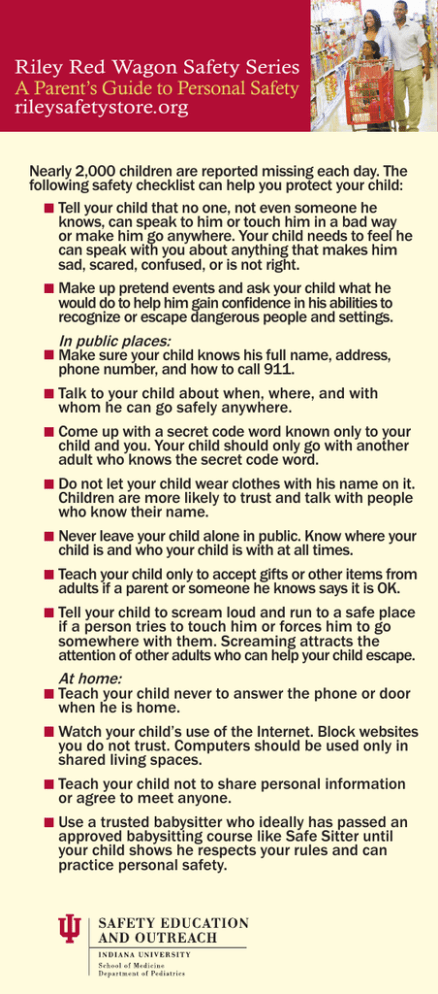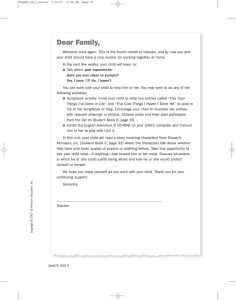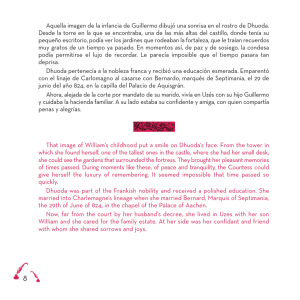Riley Red Wagon Safety Series A Parent`s Guide to
Anuncio

Riley Red Wagon Safety Series A Parent’s Guide to Personal Safety rileysafetystore.org Nearly 2,000 children are reported missing each day. The following safety checklist can help you protect your child: Tell your child that no one, not even someone he knows, can speak to him or touch him in a bad way or make him go anywhere. Your child needs to feel he can speak with you about anything that makes him sad, scared, confused, or is not right. Make up pretend events and ask your child what he would do to help him gain confidence in his abilities to recognize or escape dangerous people and settings. In public places: Make sure your child knows his full name, address, phone number, and how to call 911. Talk to your child about when, where, and with whom he can go safely anywhere. Come up with a secret code word known only to your child and you. Your child should only go with another adult who knows the secret code word. Do not let your child wear clothes with his name on it. Children are more likely to trust and talk with people who know their name. Never leave your child alone in public. Know where your child is and who your child is with at all times. Teach your child only to accept gifts or other items from adults if a parent or someone he knows says it is OK. Tell your child to scream loud and run to a safe place if a person tries to touch him or forces him to go somewhere with them. Screaming attracts the attention of other adults who can help your child escape. At home: Teach your child never to answer the phone or door when he is home. Watch your child’s use of the Internet. Block websites you do not trust. Computers should be used only in shared living spaces. Teach your child not to share personal information or agree to meet anyone. Use a trusted babysitter who ideally has passed an approved babysitting course like Safe Sitter until your child shows he respects your rules and can practice personal safety. Riley Red Wagon Safety Series Guía para padres sobre la seguridad personal rileysafetystore.org Cada día se denuncia la desaparición de, aproximadamente, 2.000 niños. La siguiente lista le puede ayudar a proteger a su hijo: Dígale a su hijo que ninguna persona, incluso alguien que él conoce, puede hablar con él o tocarlo de una manera inadecuada ni obligarlo a ir a ningún sitio. Su hijo tiene que sentirse cómodo hablando con usted sobre cualquier tema que lo haga sentir triste, asustado, confuso o algo que no esté bien. Invente situaciones y pregúntele a su hijo qué haría para ayudarle a aumentar la confianza en su capacidad para reconocer o escapar de la gente o las situaciones peligrosas. En los lugares públicos: Asegúrese de que su hijo sepa cuál es su nombre completo, número de teléfono y cómo llamar al 911. Hable con su hijo sobre cuándo, dónde y con quién puede ir a cualquier sitio con una persona y sentirse seguro. Invente una palabra a modo de código secreto que conozca sólo usted y su hijo. Su hijo debe ir con otro adulto únicamente si conoce la palabra del código secreto. No permita que su hijo use ropa que tenga su nombre. Los niños tienen mayores posibilidades de confiar y hablar con la gente que conoce cuál es su nombre. Nunca deje solo a su hijo cuando se encuentre en público. Sepa a dónde está su hijo y con quién se encuentra en todo momento. Enséñele a su hijo a aceptar obsequios u otros objetos de los adultos únicamente con la aprobación de uno de los padres o de alguien que él conoce. Dígale a su hijo que grite fuerte y corra a un lugar seguro si una persona trata de tocarlo o lo obliga a ir a algún sitio con él. Los gritos atraen la atención de otros adultos que pueden ayudarle a escapar a su hijo. En la casa: Enséñele a su hijo a que nunca responda el teléfono o abra la puerta mientras se encuentre en casa. Observe cuando su hijo use el Internet. Bloquee los sitios de web si usted desconfía de ellos. Las computadoras deben usarse únicamente en los sitios compartidos. Enséñele a su hijo a no compartir información personal ni a aceptar reunirse con ninguna persona. Use una niñera de confianza que, idealmente, haya aprobado un curso de niñera, como Safe Sitter, hasta que su hijo demuestre que respeta sus reglas y puede practicar la seguridad personal. SAFETY EDUCATION AND OUTREACH I NDI ANA UNI V ER S I T Y School of Medicine Depar tment of Pediatrics


